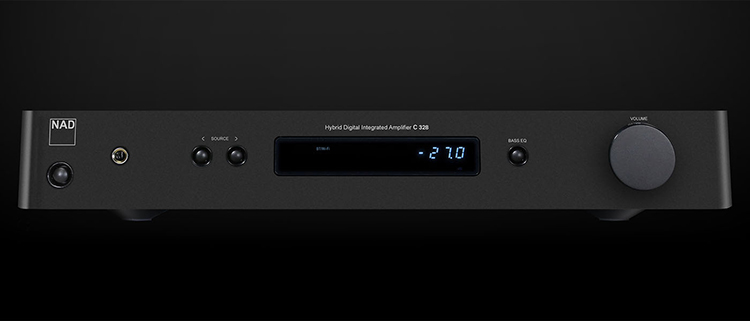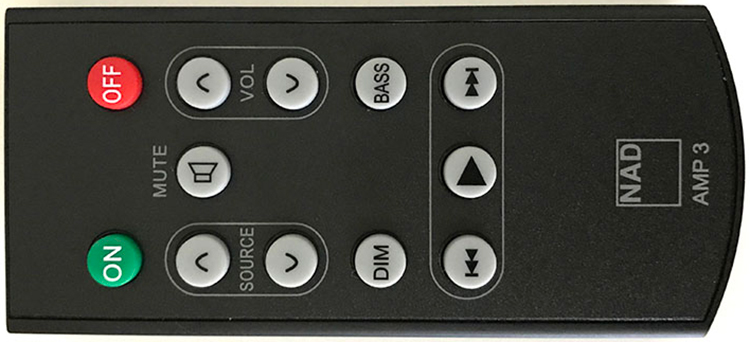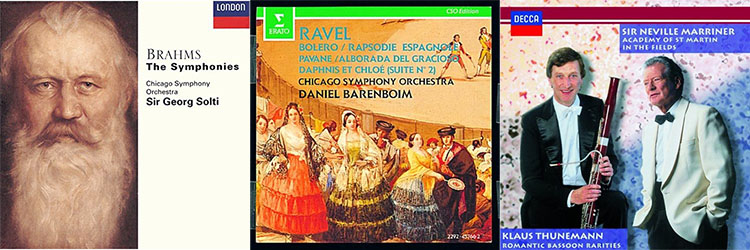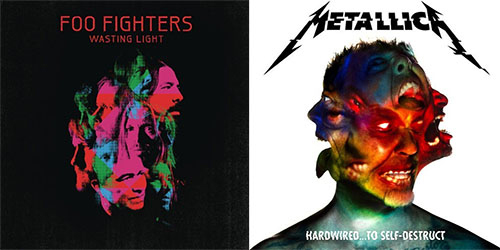The C 328 Hybrid Digital DAC Amplifier is the ideal anchor for a high-performance two-channel system. It supports today’s digital sources with an advanced dual-differential DAC section and accommodates analog boxes too with two RCA stereo inputs plus a moving-magnet phono section. And you can stream via Bluetooth from a phone, tablet, or computer. A subwoofer output insures a well-supported low end, and there’s even a bass eq switch that boosts output around the 80Hz crossover point. At a $549 MSRP, it offers a lot of bang for the buck.

NAD C 328 Hybrid Digital DAC Integrated Amplifier
- Advanced DAC with dual-differential design
- 50W per channel into 8 or 4 ohms
- Four digital inputs, two RCA inputs, and MM phono input
- Bluetooth input
- Simple and slim design integrates easily into a room
- Tremendous quality for the price
With the C 328 Hybrid Digital DAC Amplifier, NAD continues its long-standing tradition of providing the best possible sound at the lowest possible price. By no means do I imply that NAD is a bargain brand. But this incredibly capable box offers tremendous performance for only $549. If it were simply a good two-channel amp, the price would still be attractive. But by adding an advanced DAC and a phono stage, NAD has set a high bar for value.
Type:
2-channel integrated amplifier w/DAC
Continuous Output Power:
50W into 4/8 Ohms
Dynamic power:
Up to 210W into 2 ohms
THD (20Hz-20kHz):
<0.03 % (100mW to 40W, 8 ohms and 4 ohms)
Signal-to-Noise Ratio:
>95dB (A-weighted, -12dBFS input, ref. 1W out in 8 ohms)
Frequency response:
±0.3dB (20Hz-20kHz)
Gain:
47dB digital, 37dB analog
Analog channel separation:
>85dB (1kHz), >70dB (10kHz)
Digital channel separation:
>80dB (1kHz), >70dB (10kHz)
Damping factor:
>100 (20Hz-20kHz)
Input sensitivity (40W in 8 ohms):
250mV
Inputs:
2 x RCA, 1 x MM phono, 2 x coax, 2 x Toslink, Bluetooth
Outputs:
1 x RCA subwoofer
Speaker Terminals:
Five-way binding posts
Dimensions:
17 1/8” x 2 13/16” x 11 1/4" (WxHxD)
Weight:
10.8lbs
Warranty:
3 years
NAD C 328 Hybrid Digital DAC Amplifier Price:
$549
Company:
SECRETS Tags:
NAD C 328 Hybrid Digital DAC Amplifier, NAD, Hybrid Digital, Class D Amplifier, Integrated Amplifier, DAC, Bluetooth, Integrated Amplifier Reviews 2018
- NAD M32 Direct Digital Amplifier Review
- NAD Masters Series M50.2 Digital Music Player Review
- NAD C 338 Hybrid Digital Integrated Amplifier Review
While the broader market focuses on features and new technologies like Dolby Atmos and Ultra HD, NAD remains a strong advocate of quality over quantity. Rather than adding a laundry list of features, the C 328 is simply a logical update to its venerable predecessor, the C 326BEE. That was a traditional analog two-channel integrated amp with a Class AB output stage. The C 328 is pretty much a clean-sheet design that adds moving-magnet phono support and an eight-channel DAC with a dual-differential design that ensures the near-elimination of noise and distortion. The output stage is a custom version of the tried-and-true Hypex UcD Class D design. What we have here is something NAD calls “entry level high-end”. The sound quality easily matches more expensive boxes but keeps costs down with smart and efficient design and engineering. Let’s take a look.

When unpacking the C 328, I couldn’t help but be reminded of the 3020 integrated amp I owned back in the mid-eighties. I was at school in Boston and just itching to buy a decent piece of stereo gear to make my Technics turntable and tape deck sound better. A Kenwood receiver had sufficed through high school but my conservatory studies demanded a more critical listening rig. I found a small shop that sold NAD and was immediately drawn to the 3020 with its beautiful neutral sound and distinct brown faceplate. Needless to say, I plunked down the cash. That single component introduced me to quality audio and I’ve never forgotten that experience. In today’s age of huge feature lists and barrage of technology, it’s components like the C 328 that remind us why we got into this hobby in the first place.
Secrets Sponsor
Like all integrated amplifiers, the C 328 includes multiple components, or sections, in a single box. The pre-amp supports two analog inputs, labeled TV and Streaming. A third set of RCA jacks feeds the moving-magnet phono stage. Digital sources can be connected to any of two coax or two optical inputs. The DAC is an eight-channel design which is summed into a dual-differential configuration. Basically, what NAD has done is to use a cost-effective chip in a way that lowers noise beyond a vanishing point and increases dynamic range. Rather than employing an expensive solution, they’ve found a better way to use a mainstream part.

The C 328 also supports Bluetooth-enabled devices like phones, tablets, and computers. While the interface compresses the signal, the advanced DAC treats that information much better than other systems delivering superior sound in the process. While I would not personally turn to Bluetooth as my main listening source, it provides a level of convenience that will be attractive to many users, and manages to sound pretty good too.
Secrets Sponsor
The volume controller is very precise and modulates amplitude in .5dB increments. It has a 120dB range and is entirely governed by software. It promises less distortion than its predecessor from the C 326BEE.
The power stage employs an active power supply. As explained to me by NAD’s Director of Technology and Product Planning, Greg Stidsen, it is essentially a power amp that produces pure DC voltage. This is far more stable and controllable than a traditional linear power supply. It can handle variations in AC power more easily and is coupled with a Load Invariant output stage. This design is a NAD’s take on the Hypex UcD self-oscillating Class D amplifier. It uses eight active discrete devices that almost completely eliminate distortion and crossover artifacts.
On the outside, the C 328’s simple appearance belies the high-end tech going on within. The front panel is broken only by a small display and buttons for power, source, and bass eq. A step-less volume knob adorns the right side and a quarter-inch headphone jack is included too. NAD takes can-fans seriously with a separate headphone amp section boasting less than .005% distortion at 1V output. Low output impedance means it can drive anything one cares to plug in.
Also on the packed back panel is a connector for the included Bluetooth antenna and large five-way speaker binding posts. A ground terminal is included for turntable users and control can be accomplished through an RS-232 port. The detachable power cord is grounded as well and you can turn the power off completely with a toggle switch. Those who wish to add a subwoofer can connect it to the included output. Or, if your bookshelves need an extra shot of low-end goodness, engage the bass eq switch on the front. It boosts frequencies around 80Hz by 8dB with a smooth roll-off.

A tiny remote is included that controls all the C 328’s functions to include discrete power buttons, volume, source, bass eq, and display dimmer. There are also a set of transport keys that work for Bluetooth sources once it’s paired with a phone, tablet, or computer. A neat learning feature allows non-NAD remotes to control the C 328. After engaging the learn mode with a button combo, the amp can learn, say, a volume up/down command from your TV’s remote. Then it can control the unit instead of the included handset. This is great for users who want to run their display’s sound through their two-channel system rather than its built-in speakers.
The setup of the C 328 can literally be described thusly: hook up speakers, hook up source, plug into AC, enjoy. It is truly that simple. There are no menus to explore or settings to experiment with. Literally the only two things that affect sound are the volume knob and the bass eq. For my review, I used an OPPO BDP-93 as a digital transport through one of the coax inputs. The I connected a pair of Axiom LFR1100 tower speakers. Those of you familiar with them will now be saying, “but they require two channels of amplification each.” Since the front and rear driver arrays are electronically separated, one can simply cable the front array and run them like a pair of M100s, which is exactly what I did. Cables were Bluejeans and media was good ‘ole Redbook CD.
To pair a Bluetooth source, attach the included antenna, turn the C 328 on and watch it appear in your phone, tablet, or computer’s list of discovered devices. Select pair and you’re done. There isn’t much more to say here so on to the listening.

I began with a very familiar recording of Brahms Symphony No. 2, performed by the Chicago Symphony under Sir Georg Solti. This London Digital CD is a classic in every sense but its quality pales in comparison to modern releases. It takes a solid system to flesh out the details. Many amps and processors I’ve listened to make the strings sound like mush and all the instruments seem as if they’re at the same distance from the listener. The C 328 on the other hand, had little trouble placing the violins and cellos at the front, the woodwinds mid-stage, and the brass at the back. In fact, I haven’t heard it sound this good since I had the M32 Masters Series amp in my system. All the dynamic range in the recording (and there isn’t much) was present as was its full detail. I could hear the creak of chairs, musicians’ breathing, and the rustling of sheet music. That’s what I love about these CDs, they’re unfailingly honest.
I experimented with the bass eq toggle and found it added a little depth to the sound without causing any bass bloat. Even when off, lower frequencies weren’t always well-controlled, but I blame the material for that, not the C328.
Next up was Ravel’s Daphnis and Chloe, Suite No. 2, again with the Chicago Symphony, this time conducted by Daniel Barenboim. This pressing by Erato is cleaner than the Brahms performance and sports a bit more dynamic range, and far more transparency. All of that was on display thanks to the C 328’s deft and precise handling.
I took this opportunity to make an A/B comparison of CD versus Bluetooth by queueing up the same selection on my phone. It’s ripped in Apple Lossless format so the original material is of the same quality. I was pleased to hear that no level adjustment was necessary if I had my iPhone’s output volume maxed. Going back and forth between CD and Bluetooth revealed far less difference than one would expect. Dynamics were a bit compressed on the streamed version, and there was some distortion present in the louder passages, especially in the high registers of the strings and brass. Of course, I preferred the CD but only by a small margin.
I couldn’t leave the classical realm without some first-rate bassooning, so I grabbed Klaus Thunemann’s Romantic Bassoon Rarities. This collection of obscure concertos is delightful and his sound and approach to the music is amazing. I really enjoy the European bassoon tone with its dark woodiness, which contrasts with the brighter and buzzier American sound. Thunemann was right at the front of the stage, never in danger of being drowned out by the orchestra. He managed to bloom in the middle register a few times which tells me he might have been a bit too close to the microphone. But the musicality and emotion were fully there.

Moving on to more popular forms, I dropped Foo Fighters’ Wasting Light into the player. This is one of my favorite rock recordings not only for the music but for its audio quality. Mixed through the legendary Neve console, it has an honesty and warmth that just doesn’t exist in many other discs. I loved hearing the clear separation of instruments with the lead guitar placed firmly in the left channel. The bass eq stayed on as it provided nice depth without too much over-slam. Some listeners may prefer to leave it off when using full-range speakers like mine, but I’m a bit of a bass-head. It depends largely on your own room’s acoustics and it’s easy to toggle the eq with the remote.
While Dave Grohl was screaming away, I went to the rack and touched the C 328’s case near the speaker terminals. It was barely above room temperature, even after an hour of high-volume listening. To call this amp efficient is an understatement. Remember, the LFR1100s are 4 ohm speakers. 50W per channel may not sound impressive on a spec sheet, but it’s more than enough to make my big towers sing without breaking a sweat.
Going to the other end of the fidelity spectrum, I tried a few tracks from Metallica’s Hardwired…To Self-Destruct. This is the CD to play when you want to demonstrate what compression sounds like. Dynamic range is exactly zero. Everything is the same volume and the recording is completely uninteresting. But I like the music, and it sounds good in the car. The C 328 did a good job of rendering detail, what there was of it. But no component will be able to make this CD sound any better than a MIDI file. That confirms to me that this amp is completely neutral in tone. It won’t make bad recordings sound good. But it will make good ones sound great.

THE NAD C 328 HYBRID DIGITAL DAC AMPLIFIER delivers high-fi sound quality at a mid-fi price. It comes shockingly close in quality to more expensive components.
- Super-clean and neutral sound
- Handles difficult speaker loads with ease
- Runs cool
- Simple setup and operation
- Effective bass eq
- Maybe a nicer remote?
I literally agonized over that Would Like To See comment for a half hour. The NAD C 328 Hybrid Digital DAC Amplifier has no flaws that I can determine. It does exactly what it’s designed to do and it does it extremely well. It required all of 10 minutes to install and played whatever I threw at it with a deft and practiced hand. From classical to rock, the C 328 can do it all. It made my LFR1100s sing with or without the bass eq, which adds a nice depth, and it never lost control of the lower frequencies. The remote? Yeah, it’s not fancy but it works. Perhaps I’m a bit spoiled by the heavy metal wonders that come with Masters Series components. But I doubt many users will complain.
With the option to connect digital, analog, or Bluetooth sources, one can enjoy excellent sound and convenience in a single, slim package. The C 328 blends right in to modern décor with its minimalist styling and unobtrusive size. Its depth is even shallow enough to fit in a bookcase with room for cables in back. You want to stack something on top? No problem. It runs so cool that ventilation is unnecessary.
My favorite audio reviews are of simple components like these. They take me back to a time before surround sound and format wars and high-res and standards that change more often than Kim Kardashian’s clothes. For those who just want a solid and reliable two-channel system for a surprisingly small sum, the NAD C 328 Hybrid Digital DAC Amplifier has few equals.


